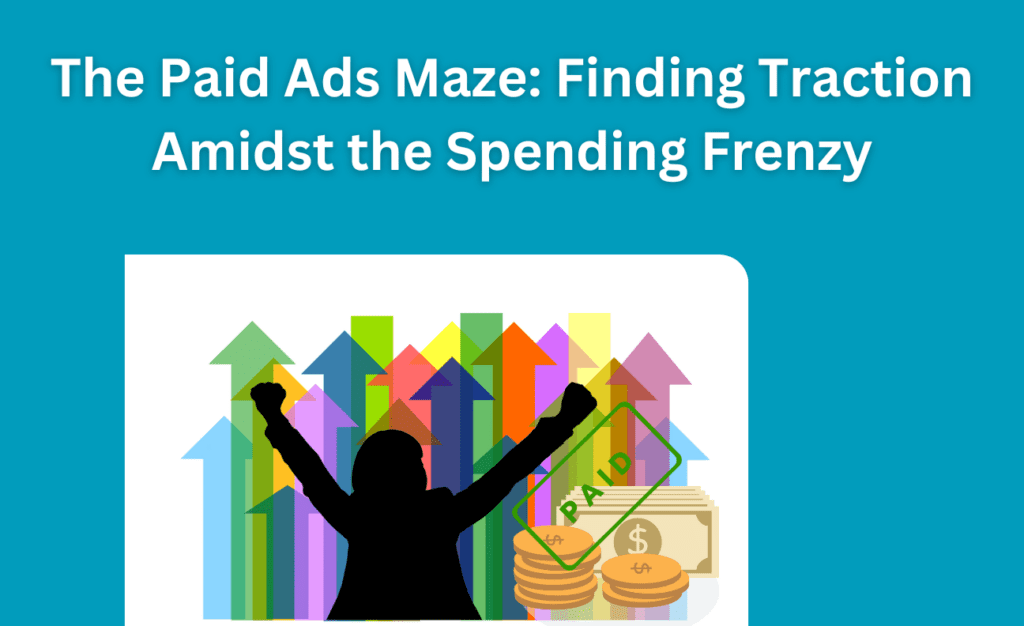In the vast digital landscape, Pay-Per-Click (PPC) advertising has emerged as an indispensable tool for businesses across the spectrum.
While industry giants have the financial clout to funnel substantial resources into their PPC campaigns without a second thought, small businesses often find themselves in a David vs. Goliath situation. Limited budgets necessitate the need for resourceful strategies to ensure every pound spent yields the best possible return on investment (ROI).
In this blog, we’ll delve deeper into the intricate world of PPC campaigns, uncovering the strategies and tactics that will empower small businesses to maximise their ROI within budget constraints.
1. Lay the Foundation: Comprehensive Keyword Research
Before embarking on your PPC journey, it’s essential to lay a strong foundation, and that foundation begins with meticulous keyword research. Small budget campaigns leave no room for error, so investing time in understanding your audience’s search behaviour is paramount.
Here’s how to do it:
a) Long-Tail Keywords: Rather than targeting broad, highly competitive keywords, focus on long-tail keywords – those specific phrases that might have lower search volumes but can yield higher conversion rates.
These long-tail gems are the secret weapons in your PPC arsenal, offering a more precise approach to capturing potential customers.
b) Negative Keywords: Equally important is identifying and excluding negative keywords. These are terms that are irrelevant to your business and can drain your budget when your ads show up for them.
Use tools like Google’s Keyword Planner to identify and weed out these budget-sapping culprits.
2. Laser-Focused Ad Copy and Landing Pages
Your PPC campaign’s success hinges on the synergy between your ad copy and landing page.
Here’s how to make them work harmoniously to drive conversions:
a) Ad Relevance: Ensure that your ad copy aligns perfectly with the keywords you’re targeting. A user should feel like they’ve found precisely what they were searching for when they click on your ad.
The more relevant your ad, the higher your Quality Score – Google’s measure of ad relevance – which can lead to lower costs and better ad placements.
b) A/B Testing: Running A/B tests on your ad copies and landing pages is a crucial aspect of campaign optimisation. Tiny tweaks can lead to significant improvements in click-through rates (CTR) and conversions.
Remember to test different headlines, ad descriptions, and calls to action to find the winning combination that resonates with your audience.
c) Mobile Optimisation: In the mobile-centric world we live in, don’t overlook mobile users. With the majority of searches happening on mobile devices, it’s crucial to have mobile-optimised landing pages to capture those potential customers.
Ensure your landing pages are responsive and load quickly on both smartphones and tablets.
3. Smart Budget Allocation
Small budgets require surgical precision when allocating your funds.
Here’s how to make every penny of your spend count:
a) Campaign Prioritisation: Not all PPC campaigns are created equal. Prioritise campaigns that have historically shown better ROI and allocate a larger portion of your budget to them.
Analyse past performance data to identify your top-performing campaigns and reallocate resources accordingly.
b) Geographic Targeting: Use geographic targeting to focus your ads on areas where your potential customers are most likely to be. This can help prevent your budget from being wasted on clicks from users outside your target market.
For example, if you’re a local business, focus your efforts on reaching customers within your immediate vicinity.
c) Dayparting: Analyse your campaign data to determine the times of day when your ads perform best. Adjust your ad schedule to allocate more budget during those high-conversion hours.
This can help you make the most of your limited resources by displaying your ads when your target audience is most active and engaged.
4. Quality Score Enhancement
Google’s Quality Score is a crucial factor in determining your ad’s position and cost-per-click (CPC). A higher Quality Score can allow you to compete more effectively even with a small budget.
Here’s how to boost your Quality Score:
a) Ad Relevance: As mentioned earlier, ensuring that your ad copy aligns with your keywords is essential. Google rewards ads that are highly relevant to the user’s search query.
Therefore, you will need to craft ad copies that directly address the user’s intent and incorporate keywords seamlessly.
b) Landing Page Experience: Make sure your landing pages provide a seamless user experience, with relevant content and fast loading times. Google considers this when assigning Quality Scores.
Make sure to conduct regular checks to ensure that your landing pages meet Google’s quality standards.
c) Click-Through Rate (CTR): Increasing your CTR can have a domino effect on your Quality Score. Experiment with different ad formats, extensions, and call-to-actions to improve CTR.
By being able to craft compelling ad copy and use ad extensions effectively, you can entice users to click on your ads more frequently.
5. Continuous Monitoring and Optimisation
Your small budget PPC campaign should never be a “set it and forget it” endeavour. Regularly monitor your campaign performance and make necessary adjustments:
a) Performance Metrics: Keep a close eye on key performance metrics like CTR, conversion rate, and cost-per-conversion. Use this data to identify areas that need improvement.
If you notice a particular keyword or ad group underperforming, adjust your bidding strategy or refine your targeting.
b) Keyword Refinement: Periodically review and refine your keyword list. Remove underperforming keywords and add new ones based on changing trends and customer behaviour.
It should be noted that keyword research should be an ongoing process to stay relevant in a dynamic digital landscape.
c) Ad Copy Updates: Refresh your ad copy to prevent ad fatigue. Over time, users may become less responsive to the same ad messaging.
Therefore,a fresh perspective and creative approach can re-engage your audience and boost CTR.
In conclusion
While small budget PPC campaigns may seem like a daunting challenge, they can be incredibly effective when approached with the right strategies.
By conducting thorough keyword research, optimising ad copy and landing pages, wisely allocating your budget, improving your Quality Score, and continually monitoring and optimising your campaigns, you can maximise your ROI and turn your small budget into a formidable weapon in the world of digital advertising.
Remember, in the battle of David vs. Goliath, strategy and precision often prevail. So, gear up, small business warriors, and conquer the PPC arena with confidence and expertise. With these strategies in your arsenal, you’re well-equipped to make every marketing pound spend count.










